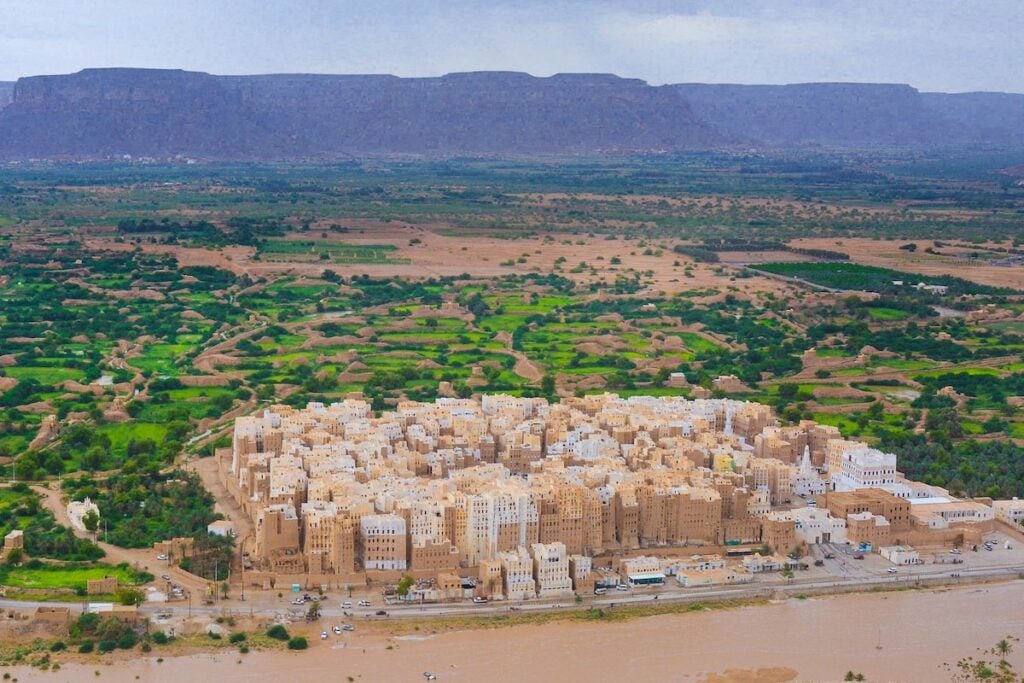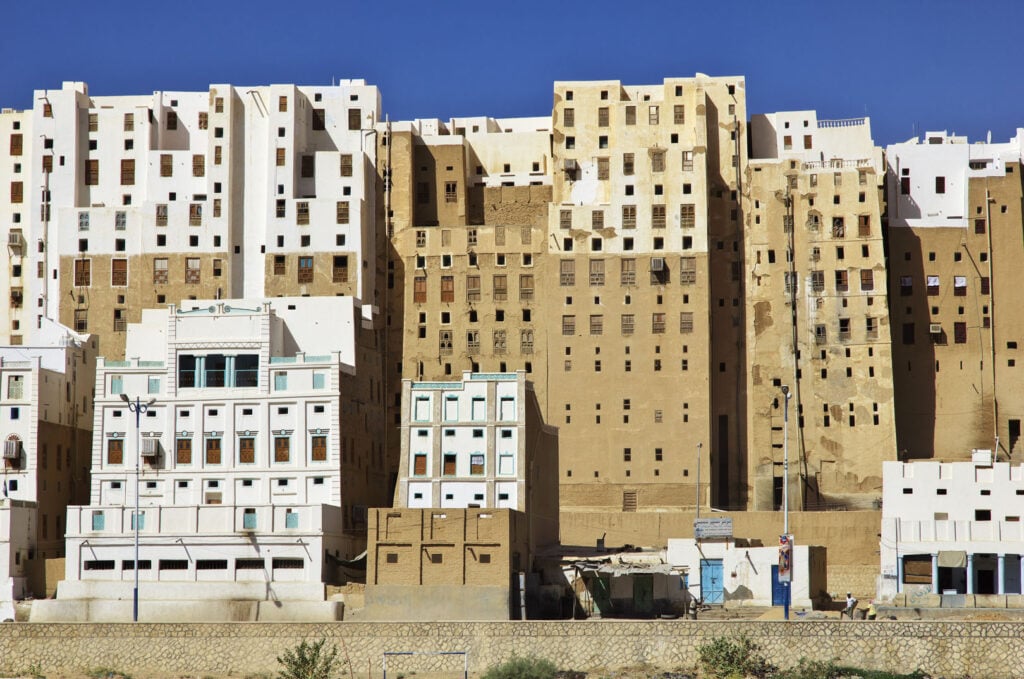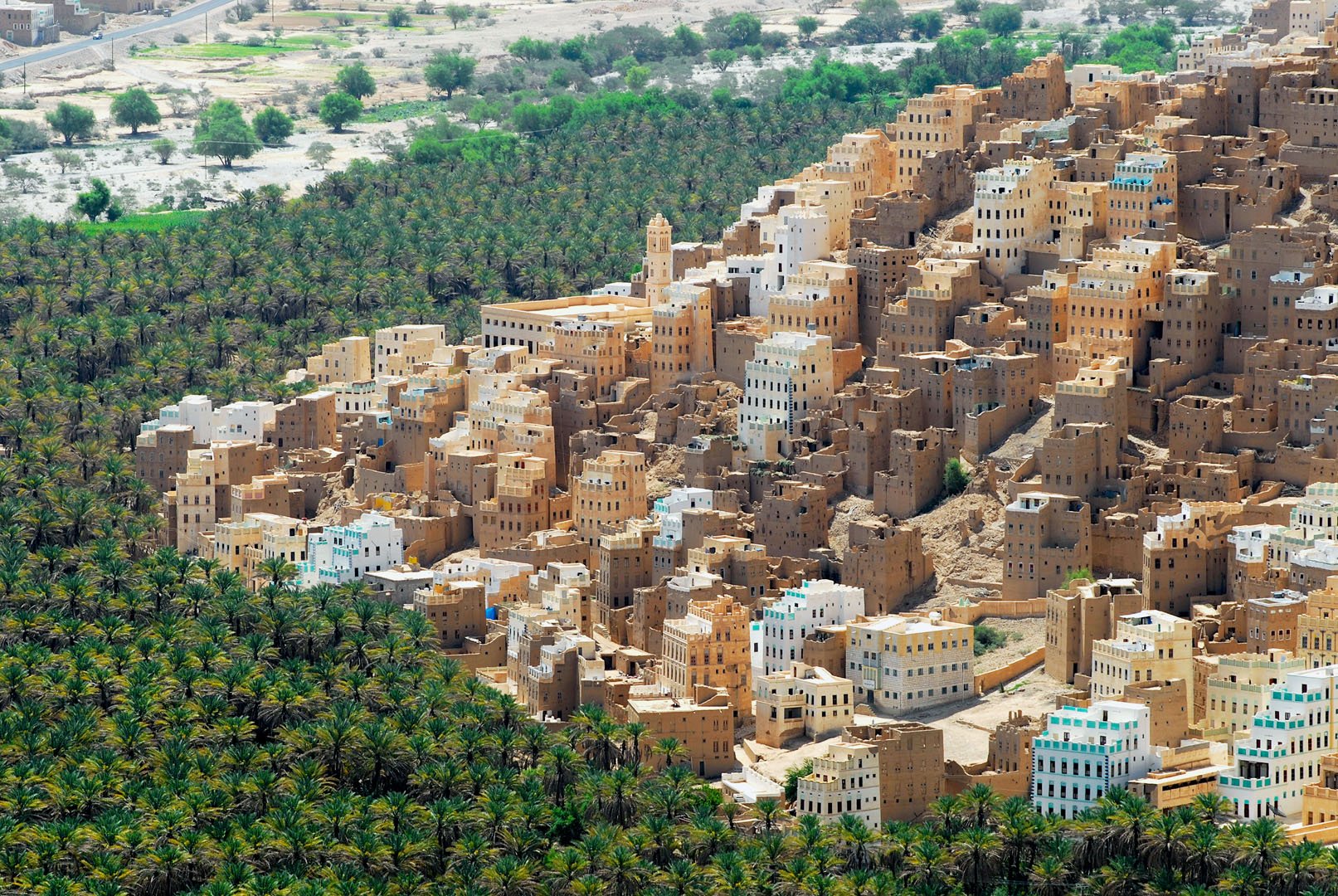Do you visit the unusual, the extraordinary, the places few have ventured? You’re in the right place! As experts in unique destinations, we thrive on unearthing travel experiences that break the mold. Located in the heart of Yemen, the city of Shibam, often referred to as the “Manhattan of the Desert”. The city stands as a testament to the resilience of vernacular architecture, thriving amidst a landscape marked by mountains, deserts, and large, dry valleys, or wadis. This skyscraper city, dating back over 500 years, offers a fascinating peek into the rich cultural and architectural heritage of the Hadhramaut region.
CultureRoad is in a unique position to offer both group and independent tours to Yemen. So it’s time to add this intriguing country to your must-visit list.
The Historic Setting
Shibam, nested within a vast wadi, evolved its distinct design from defensive necessities. Its cluster of fortified towers, enclosed by a wall, was intended to safeguard the once prosperous trading outpost from rivals and nomadic bandits.
Over centuries, the inhabitants developed a complex system for managing floods, capturing rainwater, and utilizing it to nourish the crops surrounding the city. Built on a shallow rocky outcrop slightly above the wadi floor, Shibam was strategically positioned to mitigate flood damage.

An Architectural Marvel
Shibam’s towers, some reaching up to 11 storeys, are built using wooden frames and mudbricks – a composite of earth, water, reeds, and other binding materials sun-baked to solidity. However, mudbricks erode swiftly and necessitate regular maintenance, leading to these towers being remodeled, repaired, and restored repeatedly over centuries. This preservation process, passed down through generations, makes Shibam a living testament to architectural ingenuity, constantly evolving yet deeply rooted in its past.
The city’s design is remarkably adaptive to local conditions, whether due to the ready availability of construction materials or the shade offered by the towering buildings, providing respite from the intense desert heat. This harmonious blend of form and function reflects vernacular architecture at its finest, demonstrating how local materials can effectively meet local needs.
The Living City
Shibam is more than a relic of traditional architecture. It is a vibrant city, home to thousands, that continues to resonate with life. Traveler Freya Stark, who visited in the 1930s, dubbed it the “Manhattan of the Desert” due to its density of highrises, a characteristic unseen in Western cities at the time, especially given the structures’ age and their creation without the aid of professional architects or engineers.

A Triumph of Traditional Architecture
Contrary to modern skyscrapers, typically indifferent to local conditions and constructed using concrete, steel, and a vast construction industry, Shibam’s highrises are a testament to the triumph of traditional architecture. They stand as a symbol of the successful adaptation of building techniques to their environment, all while maintaining a striking aesthetic appeal.
A Rich Cultural Heritage
Inhabited for over two millennia, Shibam was a significant hub in the interconnected world of the Ancient era. Known as Arabia Felix, or “Fertile Arabia,” Yemen was a vital player in the trade network of spices and other goods, with Roman historians such as Pliny the Elder and Diodorus documenting the region’s importance. The city of Shibam has been continuously inhabited since its inception, serving as a caravan stop for inland traders carrying spices to the coast.
The Magnificent Hadhramaut Architecture
Shibam, while exceptional, is not an isolated case of Hadhramaut architecture. The region’s landscape is dotted with cities, palaces, and fortresses like Al-Hajarayn, all boasting similar mudbrick skyscrapers. Other examples include Wadi Dawan, and the tiny village of Haid al-Jazil, constructed on an escarpment at the bottom of a narrow wadi.
Living Testaments to Architectural Adaptation
These towns, standing tall against the test of time, are not just aesthetic marvels but are living exemplars of architectural adaptation. The term “Manhattan of the Desert” scarcely does justice to the rich historical and cultural tapestry that these cities represent. They are not just centuries-old skyscrapers but living, breathing testimonials to the supreme example of vernacular architecture.
An Ongoing Legacy
These ancient skyscrapers have endured for centuries, thanks to their inherent design philosophy of continual adaptation to local conditions. Each generation that has lived here has contributed to their maintenance and preservation, passing down the knowledge and techniques necessary to sustain these structures. This cycle of adaptation and preservation makes the city of Shibam, and its neighboring towns in Hadhramaut, a living, evolving embodiment of their historical, cultural, and architectural heritage.
Visit Shibam, Yemen Today
The city of Shibam in Yemen, with its towering mudbrick skyscrapers, offers us a unique perspective on the adaptability and resilience of vernacular architecture. Far from being an ancient relic, it is a vibrant, living city that continues to thrive and evolve, much like the Manhattan of our times. Yet, it does so in harmony with its environment and cultural history, presenting an architecture that is as sustainable as it is impressive. The story of Shibam is a testament to the triumph of local wisdom and the power of adaptation, a lesson that is as relevant today as it was centuries ago.
In our search for sustainable solutions and ways to live harmoniously with our environment, the city of Shibam and the broader Hadhramaut region offer invaluable insights. They remind us that ‘skyscrapers’ are not just modern constructs but are rooted in a history that valued adaptation, sustainability, and local wisdom.
Yemen is open for tourism in 2023. Embark on an extraordinary journey in Hadhramaut to one of the most unique destinations on the planet. Ready for an adventure? Book your group or independent trip with us today!
